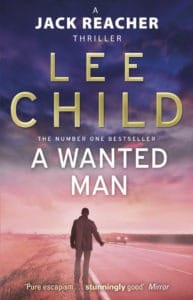

For me the big thing was letting the characters grow older. The spark for Charlie Parker was an image of a man going to visit the grave of his wife and child, flowers in the back of the car. In that last book, he’s really finished.” But what of today’s detectives? How do their authors co-exist with their characters over years – sometimes decades – and what lies ahead? but it will not be possible to recover Montalbano.
#Lee child jack reacher in order series#
To avoid any such reversals, the late Andrea Camilleri wrote the final novel in his Inspector Montalbano series 14 years ago, giving it to his publisher for safekeeping: “When I get fed up with him or am not able to write any more, I’ll tell the publisher: publish that book. Readers were distraught the author quietly rejoiced – “I hold that it was not murder, but justifiable homicide in self-defence, since, if I had not killed him, he would certainly have killed me” – but by 1903, he’d resurrected him, with fans discovering in a new short story that Holmes hadn’t really died – he’d merely been fooling his enemies. Christie kills off Poirot in Curtain, and Conan Doyle did his best to wave farewell to Holmes, sending him plummeting to his doom down the Reichenbach Falls. Then there’s the question of how, or indeed whether, to draw a series to a close. Twenty years ago, though, “people would write to me and say, c’mon, that wouldn’t happen. Sara Paretsky sees crime fiction as the form “where law, justice and society come together in a natural way – that is, you can write about them without being polemical or didactic”.Ĭhild says his plots have always “included corrupt, negligent and deficient police departments and federal agencies”. For me, a conception of social justice lies at the very heart of the genre.” “The police represent the law, but the private eye represents the possibility of justice, particularly for those for whom the forces of law and order refuse to stand up: women, minorities, immigrants. In the wake of the Black Lives Matter protests, John Connolly argues that “a mistrust of the police – a mistrust of the establishment, really – runs through the private eye genre”.

How do authors coexist with their characters over years – sometimes decades – and what lies ahead? As Attica Locke says of her Texas ranger in her Highway 59 series, “writing a cop is something I thought I’d never do”. Is it best to age a hero in real time – Ruth Rendell had Inspector Wexford still solving crimes in his retirement – or to let the world move on but keep your hero young, as Patricia Cornwell does with Kay Scarpetta, who remains around 40 years old for ever ? And how does the character develop as social mores change? Writing about police can be a challenge now.
#Lee child jack reacher in order how to#
As time passes in the real world, the writer has to decide how to deal with a fictional timeline. winding him up for good,” he told his mother.Ĭreating a long-running series featuring a much-loved character can be both a blessing and a curse. By 1938, Agatha Christie had grown entirely sick of Hercule Poirot, asking: “Why did I ever invent this detestable bombastic, tiresome little creature? Eternally straightening things, eternally boasting, eternally twirling his moustache and tilting his egg-shaped head.” And nearly 50 years earlier, Arthur Conan Doyle was equally wearied by Sherlock Holmes: “I think of slaying Holmes. He’s not the first to tire of his most famous creation. “I’ve been doing it 24 years now and I couldn’t do it any more,” says Lee Child as he hands over the reins of his Jack Reacher series to his brother Andrew Grant.


 0 kommentar(er)
0 kommentar(er)
